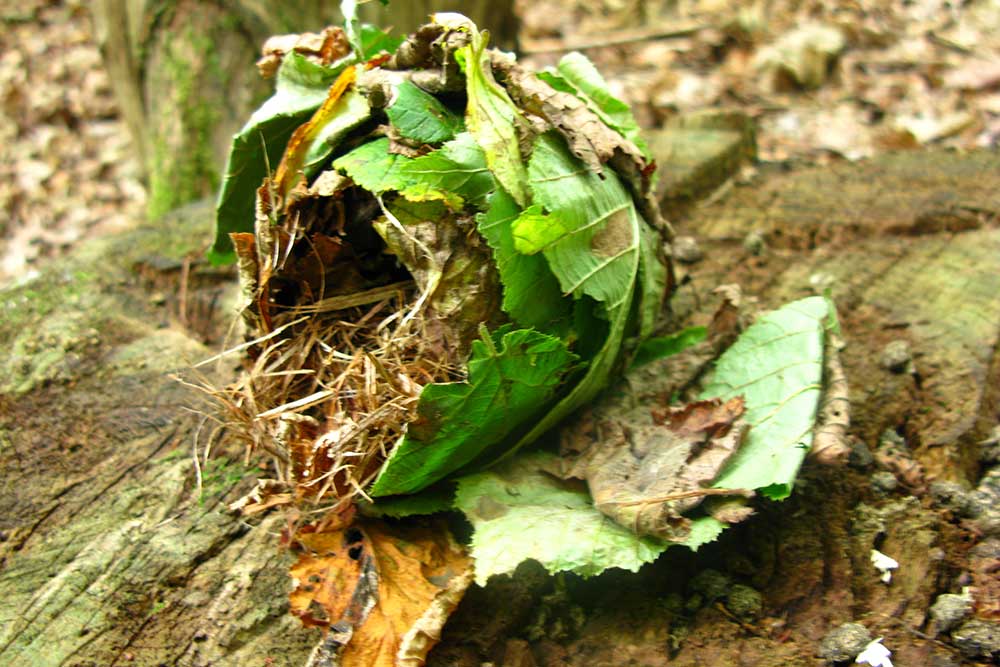Natural hazel dormouse nests

Natural nest searches
Summer nests
Where hazel is absent, other signs of dormice must be sought, such as nests. They may weave their own nests, which are up to the size of a large grapefruit and usually sited in low growing shrubs. A survey undertaken by Hurrell between 1975- 1979 showed that natural nests were most likely to be constructed using grass and leaves but honeysuckle bark was also a frequent component. Bramble was by far the most important shrub as a nest supporting plant with a total of 42% of nests recorded in bramble. The Hurrell survey was done before dormouse nest boxes started to be erected in woodlands and bird nest boxes were the next most frequent dormouse nest support.
The nests are spherical and lack an obvious entrance hole and are frequently covered with leaves. These are often collected fresh and are either green or faded to grey. Searching for nests is time consuming and often unsuccessful – even where dormice are known to be present – as they will use other places to rest (for example, tree holes) and do not always construct nests of their own. Thus, failure to find woven nests should not be used as evidence of absence.
We have been working to save hazel dormice in the UK for over 20 years. Find out about our campaigns and how you can help.
